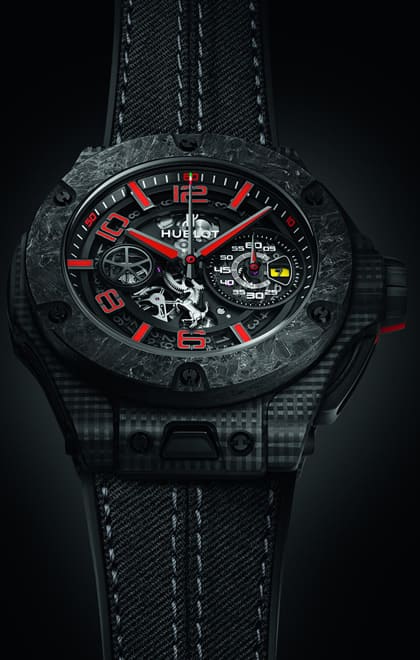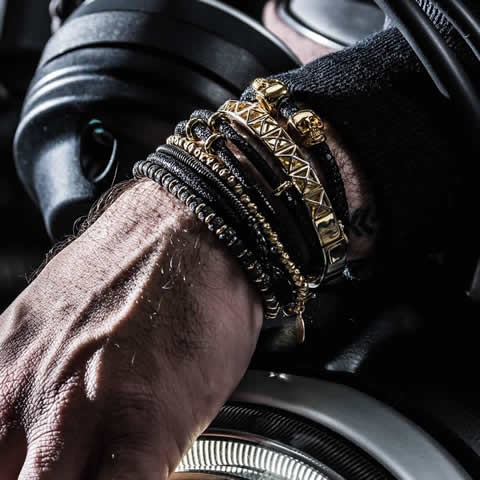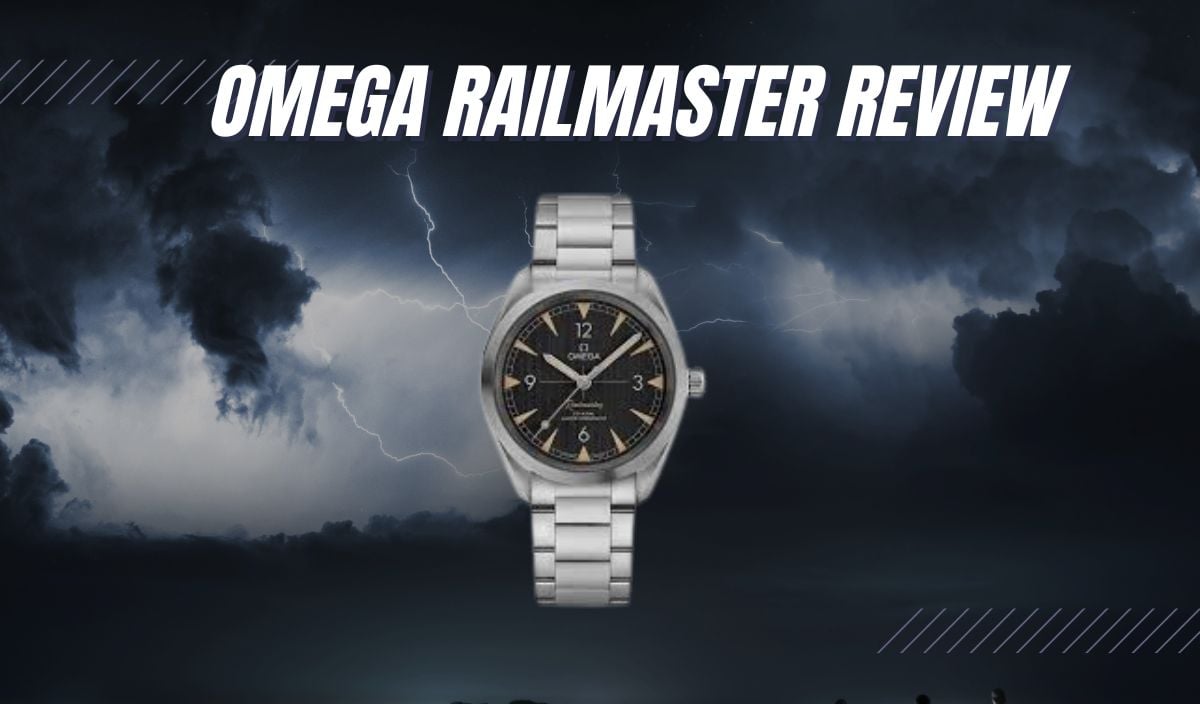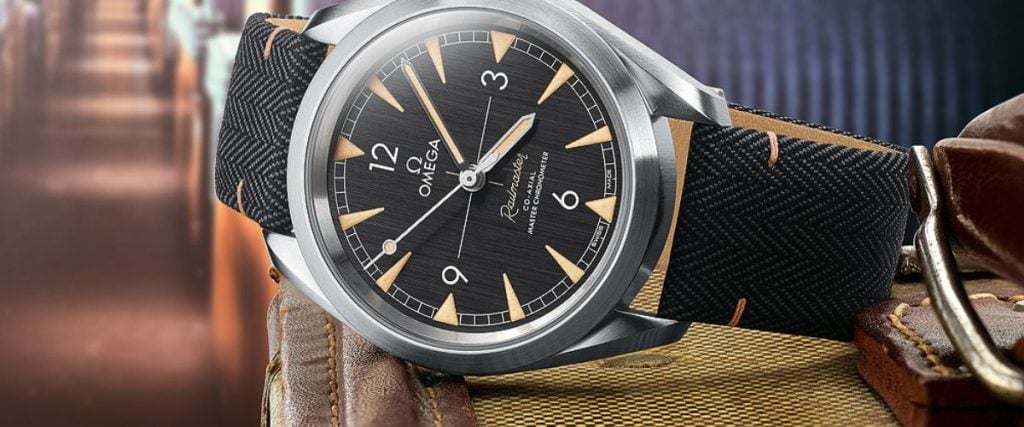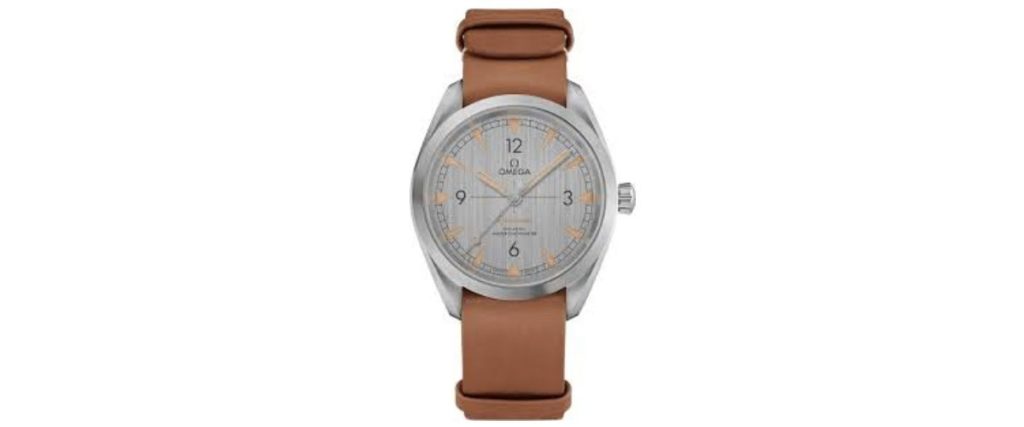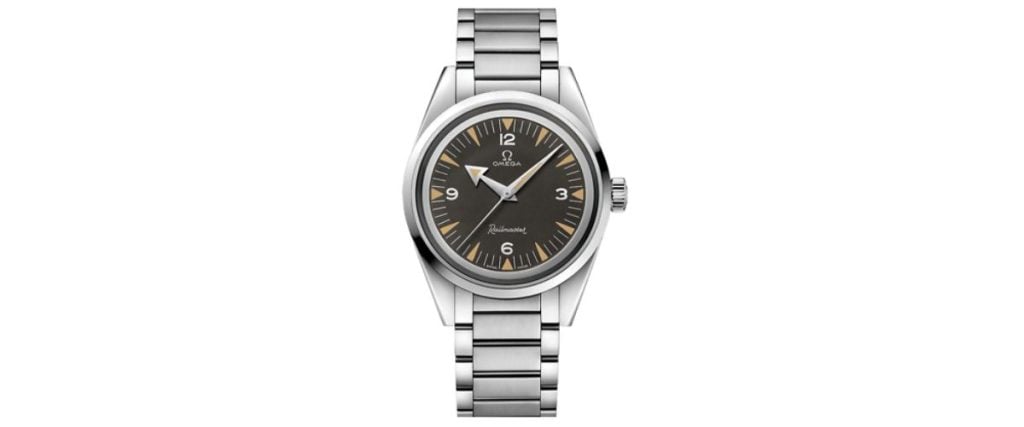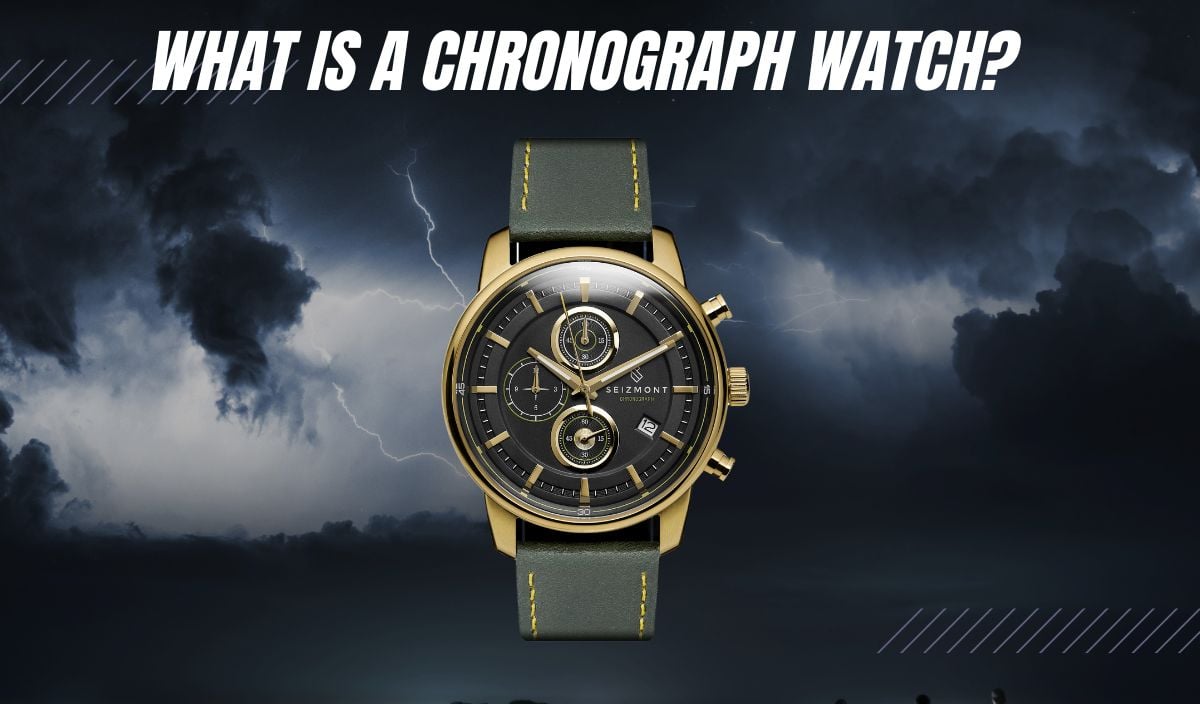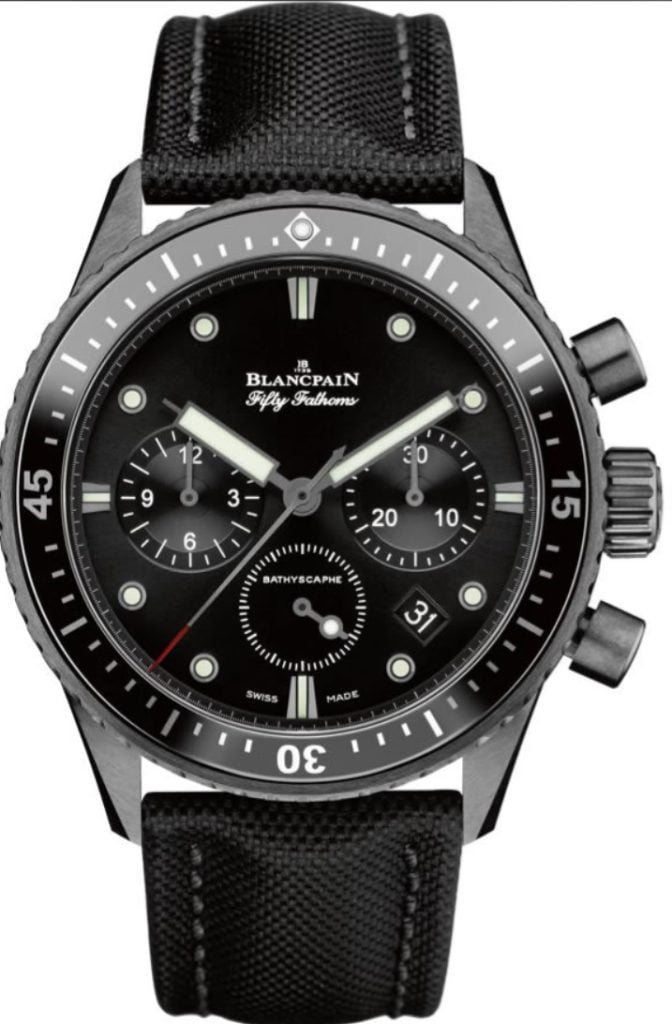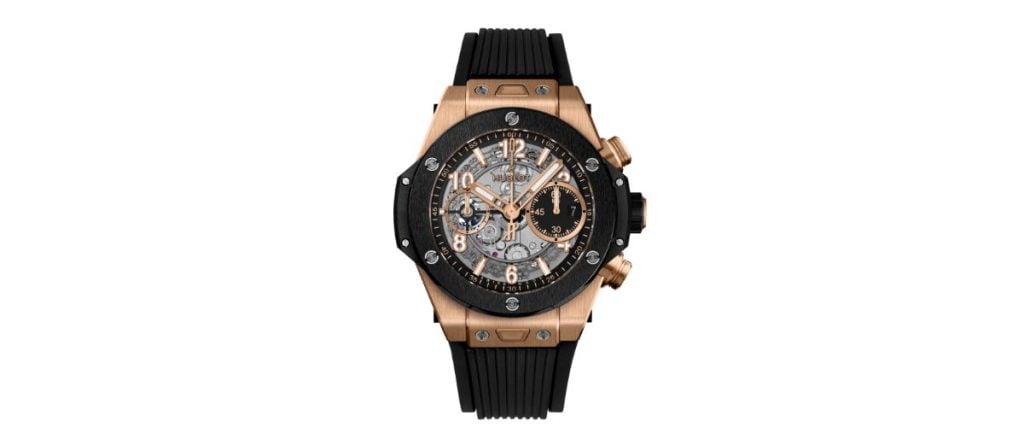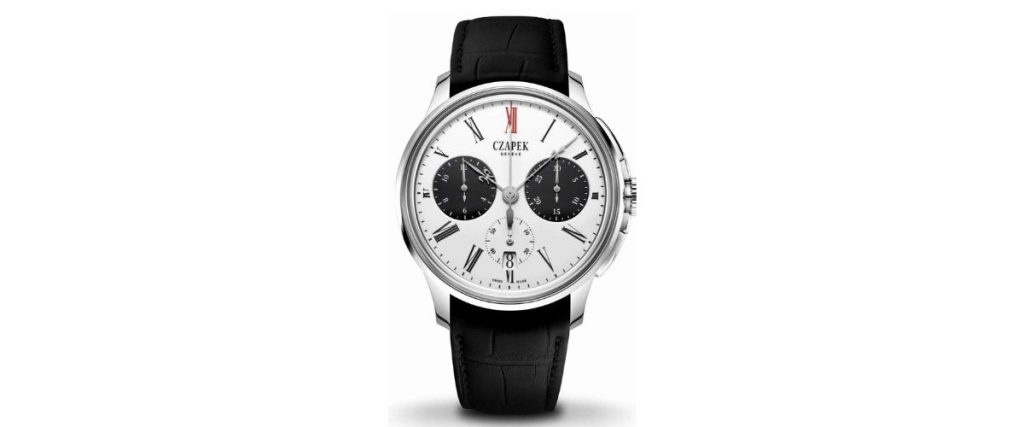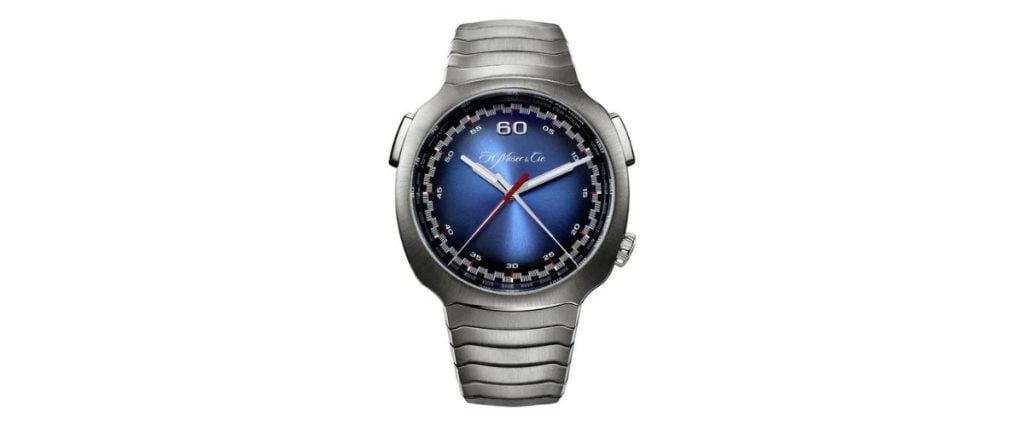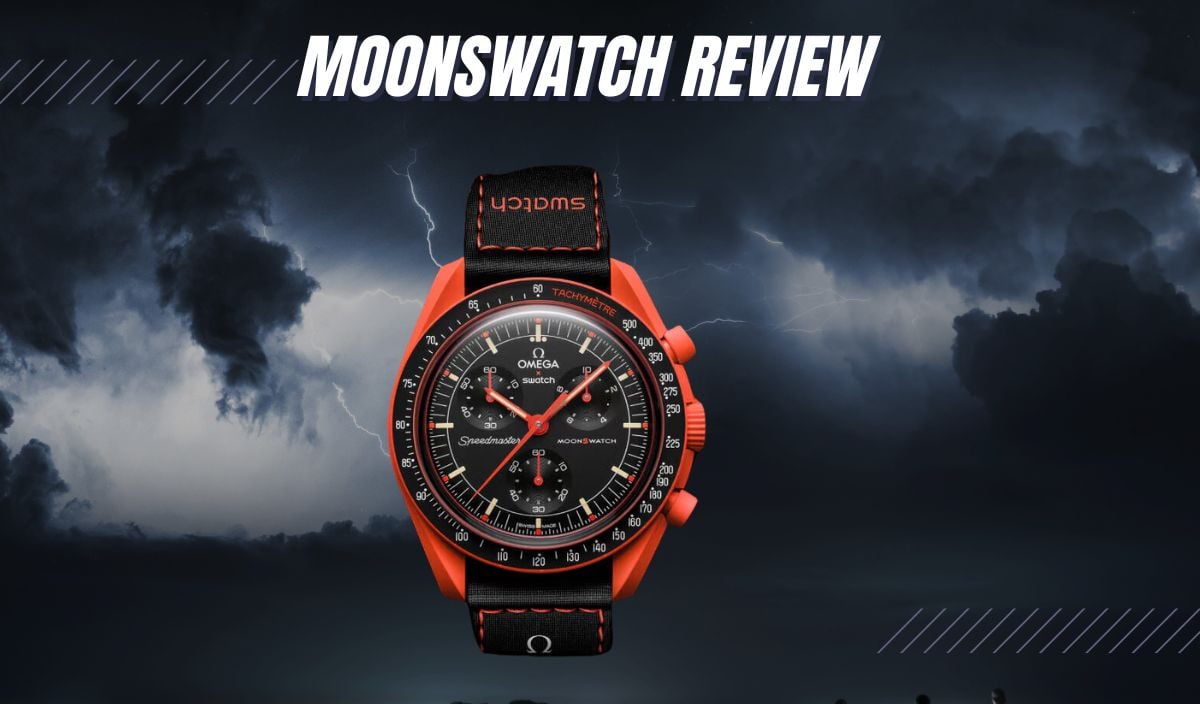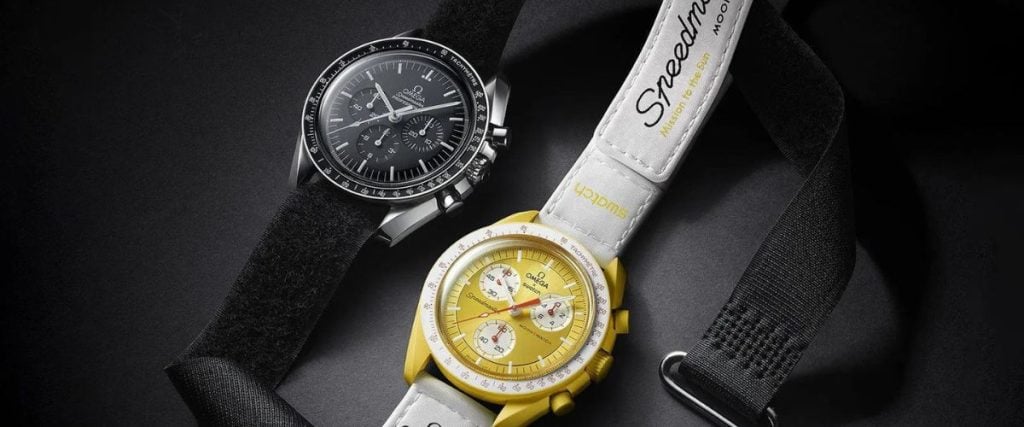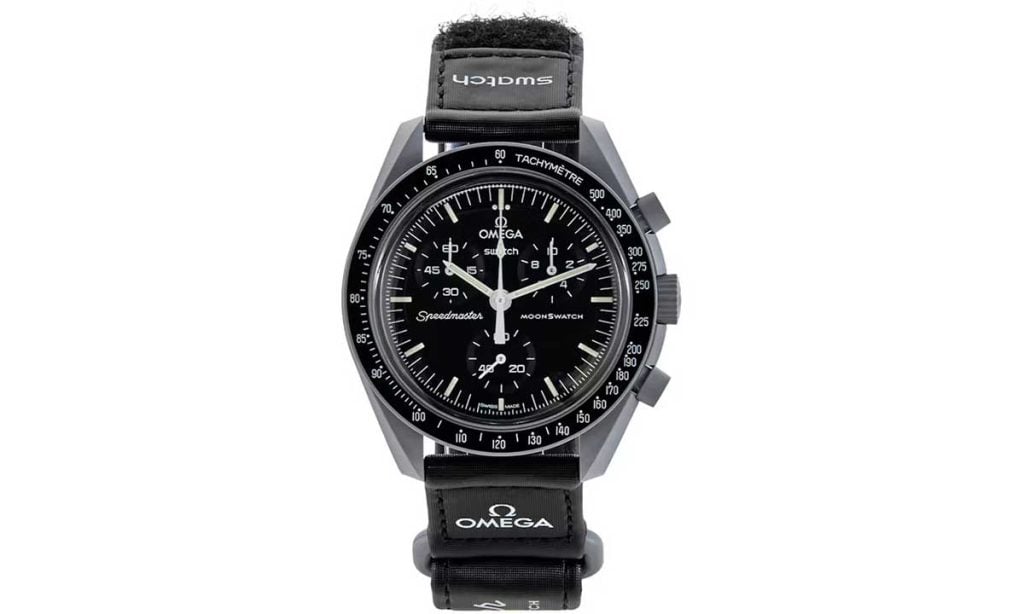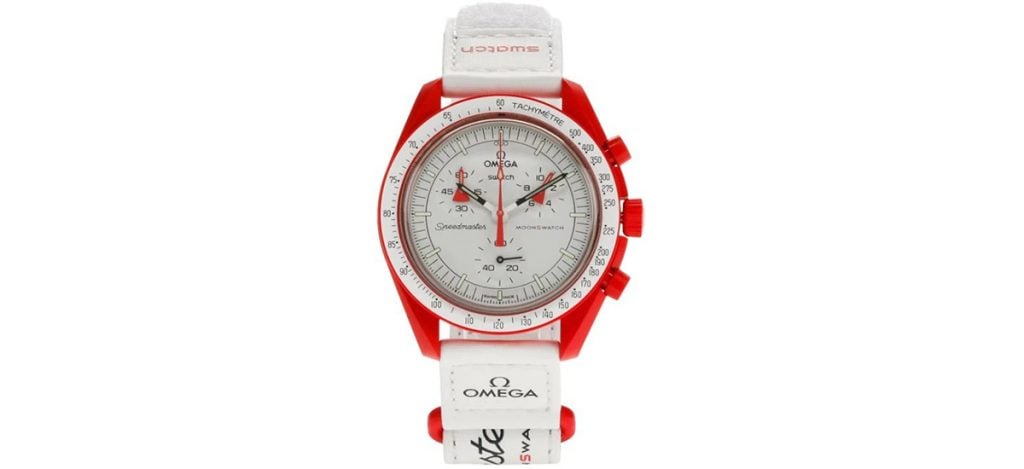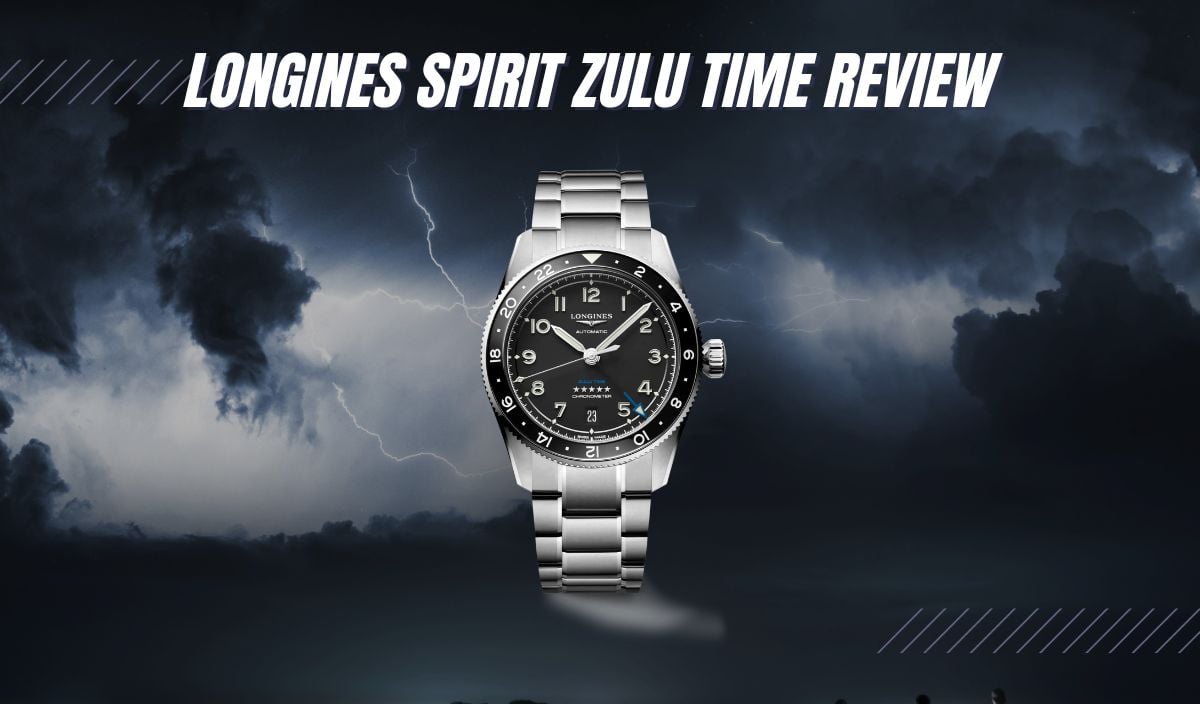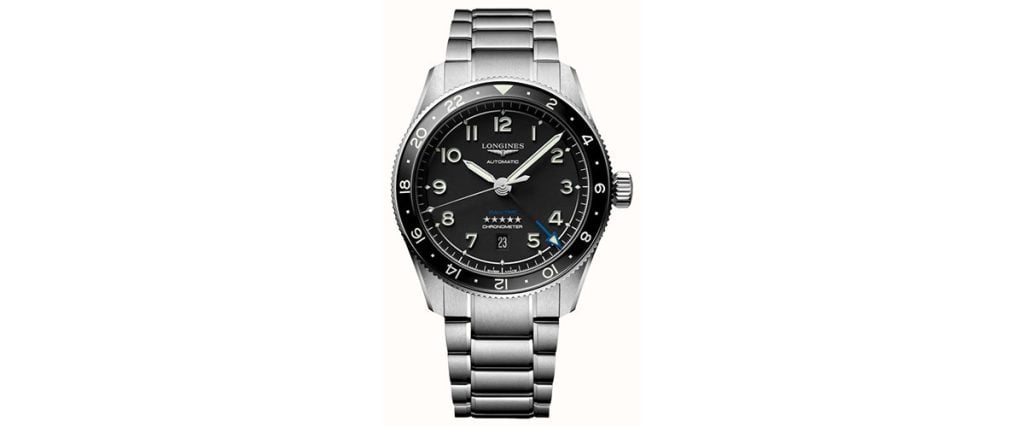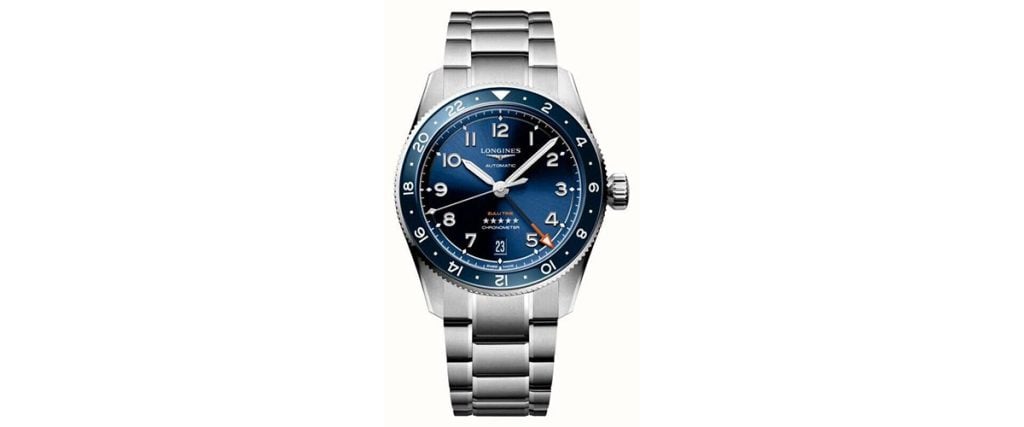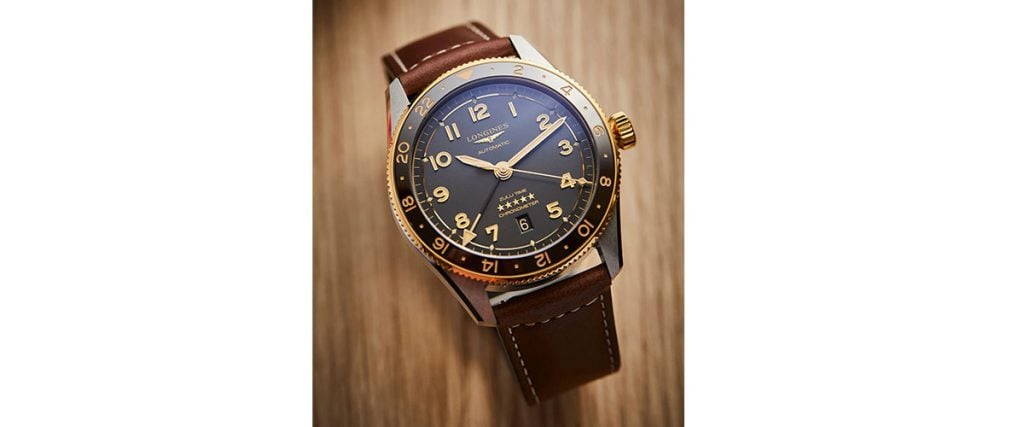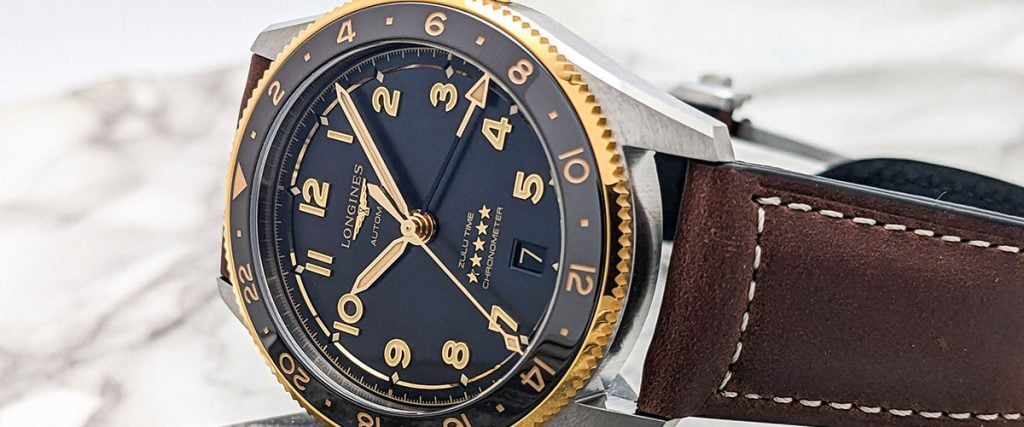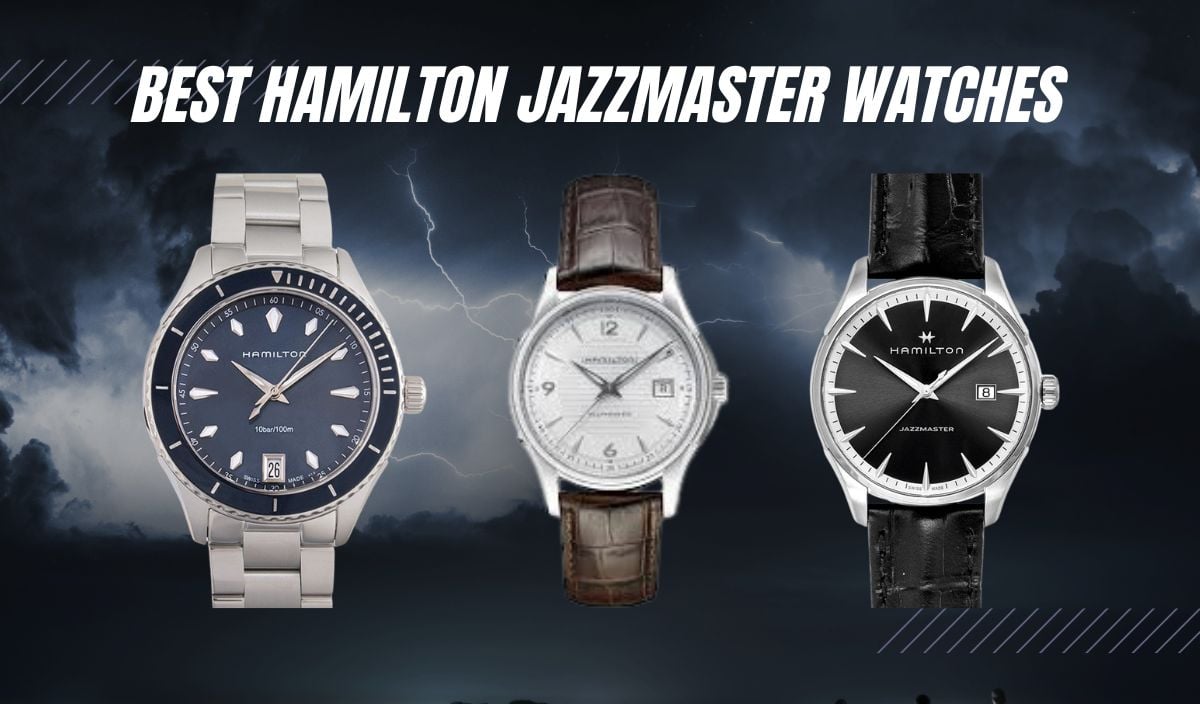
Modern Hamilton watches are “Swiss Made”, with headquarters and production in Bienne, Switzerland, but the company was “Born in the U.S.A.” in Lancaster, PA, in 1892. For over 70 years, Hamilton was an American brand known for robust and accurate watches worn by the country’s railroad workers, aviators, soldiers, sailors, and even musicians and movie stars, including “The King of Rock and Roll”, Elvis Presley.
During that same period, a new genre of music emerged from African American communities in the Deep South—jazz. Characterized by improvisation, smooth sounds, and upbeat rhythms, jazz channeled the fresh, frenetic energy of a nation coming into its own in the 20th Century and adapting to a leading role on the world stage.
Hamilton sought to capture the spirit of jazz with the launch of the Jazzmaster Lord Hamilton Chronograph in 1967. Since then, the Jazzmaster line has evolved into the company’s largest collection by fusing classic designs with modern materials and designs to produce contemporary timepieces that exude refinement and sophistication—not unlike jazz itself.
In this review, I’ll discuss 15 top Jazzmaster models and offer guidance on which one might best suit your needs and lifestyle.
About Hamilton Jazzmaster Watches
Hamilton is best known for its military watches (“Khaki” collections) and prolific product placement pieces in movies and television, such as the “Ventura” and the Khaki Field “Murph”.
Hamilton created the Jazzmaster collection by mixing mid-century and contemporary design cues, and it has grown to over 175 references that feature modern aesthetics, materials, movements (automatic and quartz available), and complications. Jazzmaster models lean more toward refined dress models than sport watches.
However, there are Jazzmaster chronographs, and even some of the dressier references have some tool watch touches such as numbered bezels and enhanced water resistance that create a sporty, “do everything” vibe that fits right in at the concert hall or clubhouse.
Which Hamilton Jazzmaster Watch is Right for You
If you’re looking for a Hamilton watch rugged enough for outdoor and water activities, the Jazzmaster family will have fewer options for you to choose from than the brand’s Khaki collections.
But let’s say you’ve already got sport and tool watches covered and want to add something more unique and eye-catching for a formal occasion or night out on the town. If that’s the case, then you will discover a plethora of possibilities in the Jazzmaster collection. If you want a little of both, there are sportier Jazzmasters that fit everyday work and casual needs.
With over 175 references in the collection, there is a Jazzmaster that will suit nearly every lifestyle at prices that are among the best in the entry-level luxury category.
The 15 Best Hamilton Jazzmaster Watches
Here are micro-reviews of 15 top Hamilton Jazzmaster watches that demonstrate the broad range of offerings in this collection:
Hamilton Jazzmaster Auto (ref. H32475730)

The classic styling of a black dial and black leather strap make the Jazzmaster Auto a great choice for both dress and everyday office wear. The 40 mm diameter mixed polished and brushed finished stainless steel case fits a wide variety of wrists, and the 11mm thickness allows it to slide neatly beneath a shirt cuff. There are applied lumed silver color dagger indices and hour and minutes hands.
The needle seconds hand reaches the silver seconds track and is lined with black indices that, fittingly, look like piano keys. There is a discrete date window at 6 ‘o’clock. Inside is the 80-hour power reserve Hamilton Caliber H-10 featuring an antimagnetic Nivachron™ hairspring and fine finishing touches showcased by a sapphire case back.
The Jazzmaster Auto only has 50m of water resistance, but that should be more than enough to handle a splash of water every now and then. Retail Price: $945
Hamilton Jazzmaster Performer Auto Chrono (ref. H36606130)
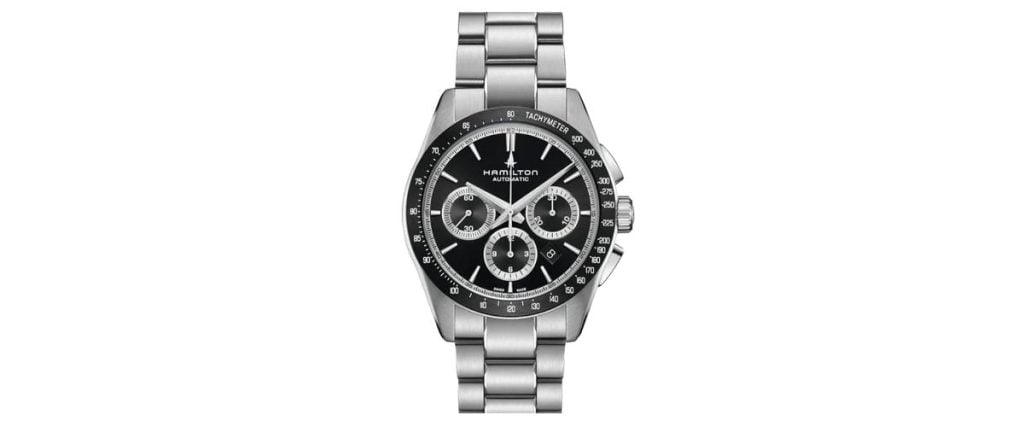
The Jazzmaster Performer Auto Chrono is a descendant of the “patriarch” Jazzmaster, the Lord Hamilton Chronograph. The 42 mm sapphire sandwich stainless steel case is mostly brushed, but polished accents include the elongated pushers, crown, and chamfered edges of the 22 mm width lugs.
The case is paired with an all-brushed stainless steel bracelet with a butterfly clasp. The dial is black with a silver border minutes track and three subdials at 3, 6, and 9 o’clock. Indices are applied and lumed, and the hours and minutes hands are sword-shaped with an arrowhead-tipped timings seconds hand.
The watch is powered by the Hamilton Calibre H-31 movement, which has a 60-hour power reserve. The screw-down crown assists in providing a respectable 100-meter of water resistance.
This is a chronometer with a bit of flair and would fit a wide variety of daily needs, including dress occasions—a dash of Daytona, reverse “Panda” vibe without the forever wait and exorbitant price. Retail Price: $2,245
Hamilton Jazzmaster Regulator Cinema (ref. H42605731)

The Jazzmaster Regulator Cinema salutes Hamilton’s regular appearance in movies with a statement piece that was gifted to presenters and honorees at the 10th Hamilton Behind the Camera Awards in 2018.
The 42 mm size stainless steel case is 12.8 mm thick, has mixed brushed and polished finishing, a lug width of 22 mm, and a scratch-resistant sapphire crystal. It is paired with a leather deployant strap and a Hamilton-signed double pusher clasp.
The dial has a black textured finish and two subdials designed to look and function like spoked movie reels, employing a rotating red arrow to indicate hours and seconds. There is a long traditional minutes hand.
The words “Hamilton Automatic” are embedded in a strip of film in the upper right. All the dial elements are integrated and feature contrasting black, red, silver, white, and gray. On the back is a sapphire display caseback with a flowing ribbon of movie film. Hurray for Hollywood! Hurray for Hamilton! Retail Price: $1,295
Hamilton Jazzmaster Chrono Quartz (ref. H32612131)
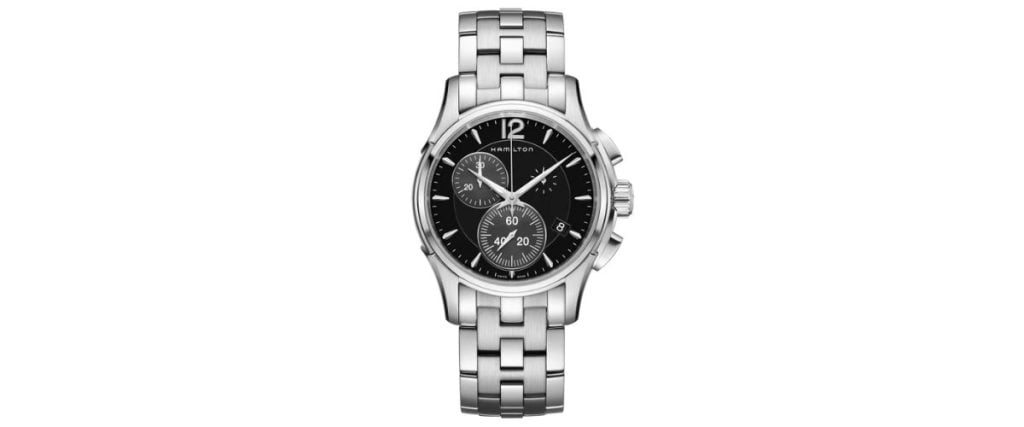
The Jazzmaster Chrono Quartz is another great all-occasion watch for the person who wants both “set it and forget it” and elapsed timing capabilities. The case is 42 mm diameter, 12 mm thick stainless steel with mixed brushed and polished finishing and paired with a butterfly clasp, 22 mm width mixed finished stainless steel bracelet with integrated “H-shaped” central links that give a stylish overlapping effect.
The dial is black with lumed dagger indices except for an Arabic numeral 12. The hour and minutes hands are lumed and Dauphine-style, and there is a needle timing seconds hand. Subdials are at 10, 2, and 6 and show timing 30 timing minutes, 1/10 seconds, and running seconds, respectively.
There is a date complication at 4 o’clock. The pushers are elongated for comfort and easy use, and the crown is pull/push, not screw down, but water resistance is still 100m. The watch is powered by the ETA Caliber 251.74 quartz movement. Retail Price: $945
Hamilton Jazzmaster Performer Auto Rose Gold (ref. H36225770)

The Jazzmaster Performer performs true to the line’s mission of combining elegant styling with sporty touches and extended water resistance. This one is unique in that the 38mm diameter, 11.5mm thick, 18 mm lug width case is rose gold PVD coated stainless steel for an upscale look. It is mostly brushed but has a polished, chamfered edge on the lugs and a screw-down, signed crown. The bezel is black with white Arabic numerals.
The dial is off-white with only a logo and minimal script, leaving it uncluttered and legible. The indices, Dauphine hour and minutes hands, and the needle seconds hand are all gold colored. A display caseback showcases the high-performing and beautifully finished Hamilton Calibre H-10 no-date, 80-hour power reserve, 21,600 bph movement. The high-quality leather perforated racing strap with pin buckle gives it an extra sport touch. Retail Price: $1,145
Hamilton Jazzmaster Thinline Special Edition (ref. H38421130)
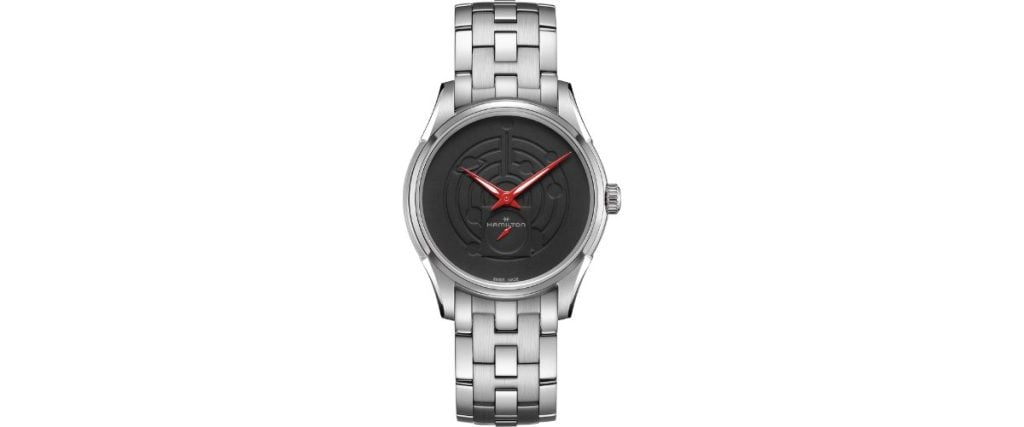
The Jazzmaster Thinline Special Edition is a quartz movement, movie-themed watch inspired by the movie The Wandering Earth II, directed by Frant Gwo and based on a novel by Chinese science fiction writer Liu Cixin.
It has a jet-black matte finish dial with an impressed planetary design and lumed, red hour and minutes hand and non-lumped small seconds hand at 6 o’clock. Within the small seconds subdial is the printed Hamilton name and logo. The streamlined stainless steel case is only 7.35 mm thick and 40 mm in diameter with 20 mm wide lugs.
The closed caseback is engraved with the same planetary design as the dial and a “G” for the film’s director Gwo. It has a stainless steel butterfly clasp bracelet with mixed brushed and polished overlapping links. This quartz watch is definitely more a specialty piece than for everyday wear, and it might appeal to fans of both sci-fi and space exploration. Retail Price: $695
Hamilton Jazzmaster Open Heart Auto (ref. H32675540)
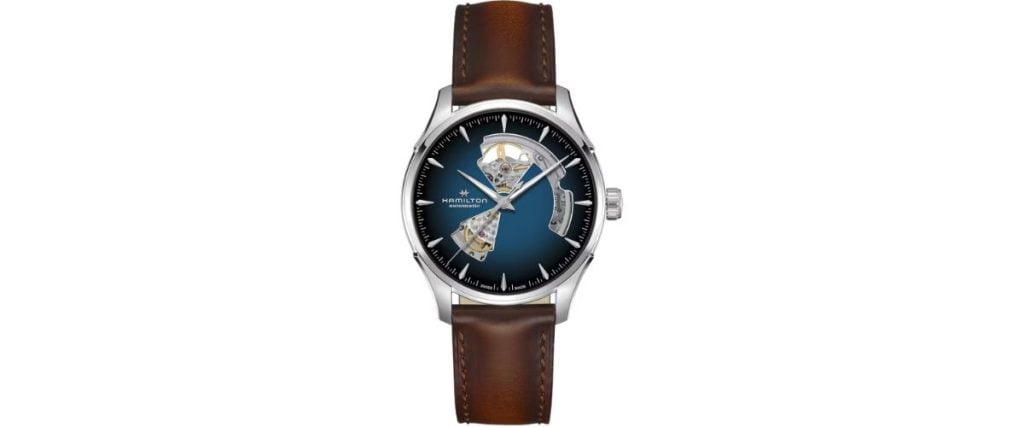
This Jazzmaster has an “open heart”, a cutout in the dial that allows a view of the watch’s mechanism. Such “open access” watches are usually associated with dress watches, so naturally the Jazzmaster collection has many of these.
This reference features a gradient dial that transitions from almost black in the periphery to a “smoky blue” center. Open heart areas are located between 7 and 8 o’clock and from 11 to 4 o’clock. It has lumed dagger indices and hour and minutes hands and an arrowhead tip on the short, central end of the needle seconds hand.
The case is 40mm stainless steel with mixed brushed and polished finishing and is only 11mm thick. There is a scratch-resistant sapphire crystal and display caseback. The movement is the no-date Hamilton H-10 with an 80-hour power reserve. The strap is 18mm in width, brown cow leather, with a pin buckle clasp. With only 50 m of water resistance, this works better with a tux than a tee. Retail Price: $1,075
Hamilton Jazzmaster Face 2 Face III (ref. H32876550)
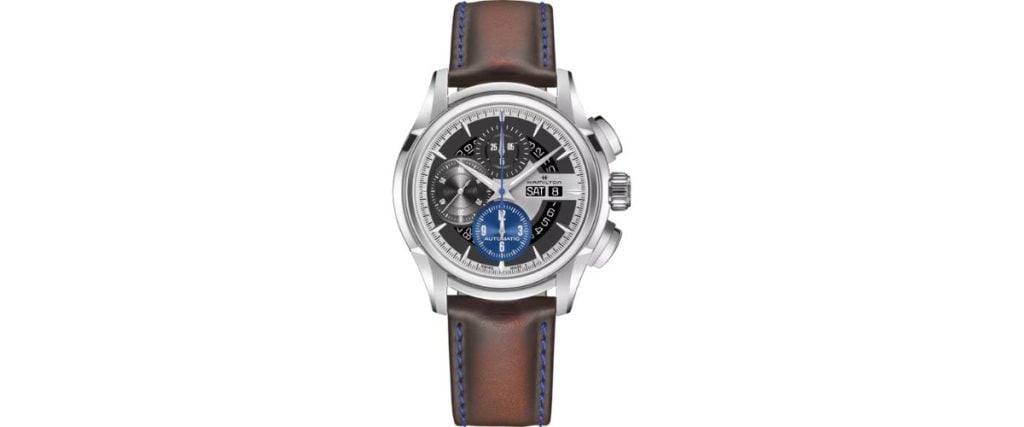
Calling someone “two-faced” isn’t normally a compliment, but in the case of the Jazzmaster Face 2 Face III, it is. This limited edition of 999 pieces is one of the most intriguing—and at 17.6 mm, probably also one of the thickest—chronographs out there.
On one side of the 44 mm diameter, 22 mm lug width stainless steel case is a day-date at 3 o’clock chronograph, with a partial skeletonization showing the rotating date wheel. The flip side showcases the Hamilton H-41 movement through a display caseback and has both a tachymeter and pulsometer.
One changes dial faces by rotating the entire case using two “hinges” at 9 and 3 o’clock. The main dial is black with subdials at 12, 9, and 6 with differing sizes, colors (the bottom subdial is blue) , and textures, creating a very unique and eye-pleasing aesthetic, an effect enhanced by the brown leather strap with blue stitching. Yes, it’s a “two-faced” and “complicated” watch—but in a good way. Retail Price: $2,995
Hamilton Jazzmaster Viewmatic Auto (ref. H32715131)
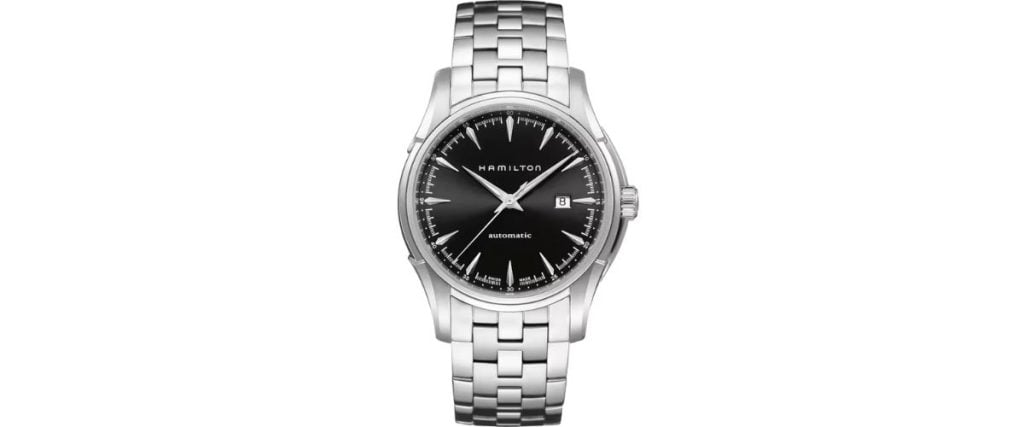
The Viewmatic Auto is a 44 mm case diameter dress watch but is only 10.4 mm thick. If you have a thicker wrist and 38 or 40 mm diameter watches look disproportional, then this one has to be on your short list. The dial is a do-it-all black and is very balanced and uncluttered, with simple “Hamilton” branding on the top half and “automatic” on the bottom, a minute track near the rehaut, and a small date window at 3 o’clock.
The dagger shaped indices and hour and minutes hands have enough lume to get by, but remember, it’s more a dress watch, not a sports one. Sapphire is used on the front crystal and display caseback which provides a view of the 28,800 bph, 38 hour power reserve ETA 2824-2. It’s a nice choice for the person who glances down at their ample wrist and says, “I’m gonna need a bigger watch.” Retail Price: $895.00
Hamilton Jazzmaster Thinline Auto (ref. H38525771)

Most Jazzmaster straps and bracelets can be swapped out easily thanks to Hamilton’s “EasyClick” quick-release system. The Jazzmaster Thinline Auto has a deep, burgundy red dial and black leather strap, making it a dressy piece for formal occasions but with enough pop of color to add some interest and flair.
With a variety of available dial and strap colors and bracelet types, one could easily transform a Thinline Auto to work in a more casual or work setting as well. The stainless steel case measures in at 40mm, and true to its name, is a wafer thin 8.45 mm.
A date window is discreetly dropped at the 6 o’clock position. Turn over the Thinline Auto, and a sapphire display back provides a view of the ETA Caliber 2892-A2 movement working away at 28,800 bph with a power reserve of 42 hours. Classy, contemporary—pure Jazzmaster. Retail Price: $945
Hamilton Jazzmaster Seaview Day Date Quartz (ref. H37551141)
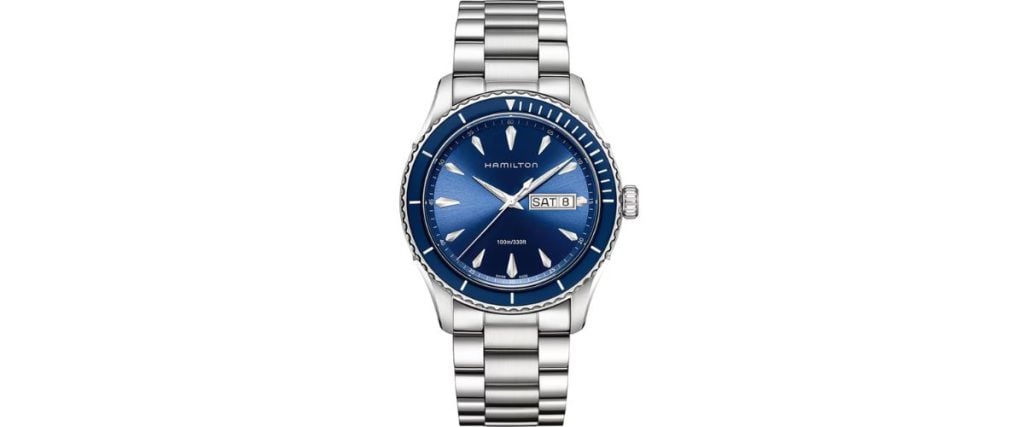
The Jazzmaster Seaview Day Date has 100 meters of water resistance with a screw-down crown and neatly bridges the gap between the line’s dressier models and Hamilton’s “outdoorsy” Khaki family.
The sporty 42 mm diameter stainless steel case is 10.85 mm thick and has a unidirectional timing bezel marked with simple lines and no numerals. The dial and bezel are a matching deep sea blue. The crown is signed with a silver “H” against a blue background. The Dauphine hours and minutes hands and “arrowhead” indices have adequate lume but not as much as true dive watches.
True to the name, there are day and date windows at 3 o’clock. The bracelet is 3-link with polished outer links and brushed in the middle, with a butterfly clasp. An ETA quartz movement provides, “set it and forget it” capability, making it both accurate and a commonsense choice for everyday wear and moderate aquatic activities. Retail Price: $745
Hamilton Jazzmaster Gent Quartz (ref. H32411735)

The Hamilton Jazzmaster Gent Quartz could easily qualify as the “little black dress” of the watch world—simple, easy to maintain, affordable, and can be dressed up or down for a wide variety of occasions.
Its mixed finished, 38 mm diameter, stainless steel case will fit a large range of wrist sizes. Its 8 mm case thickness makes for a light wrist presence and easy slide beneath a cuff. The dial is all black, with a sunburst finish central portion transitioning to a matte finish “step off” and taper downward the periphery. The lumed indices are an interesting and visually pleasing mix of Arabic numerals and arrowheads.
The minutes track is a mix of variable-length hash marks and Arabic numerals at 5-minute intervals. The only print on the dial is a simple “Hamilton”. There is a quadrangular date window at 3 o’clock. The strap width is 18 mm wide, black leather with white stitching, with a pin buckle. “Sometimes less is more.” Retail Price: $545
Hamilton Jazzmaster Regulator Auto (ref. H42615743)
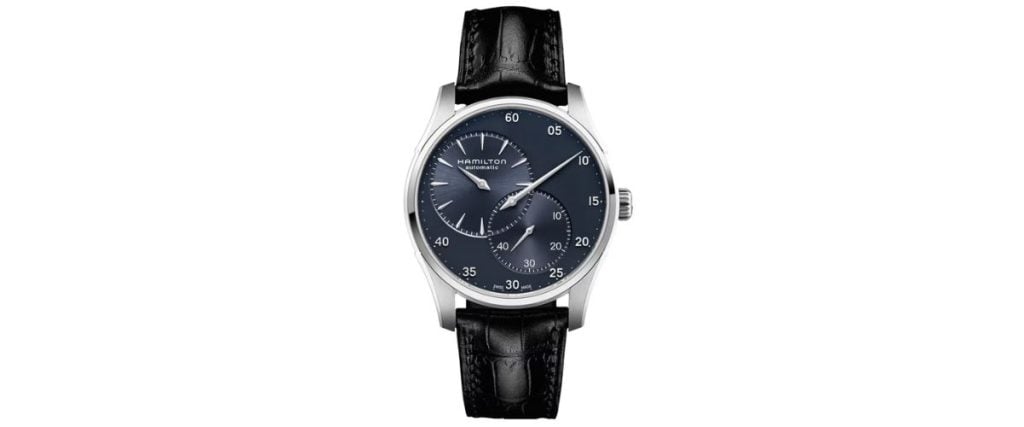
From the simplicity of the Gent Quartz, we move to the asymmetrical complexity of the dressy, no-date Jazzmaster Regulator Auto, a “tri-dial” design that could be displayed at a museum of modern art. Only the minutes hand is a traditionally central one; the other two are subdials, an hours one in the upper left and a slightly smaller and overlapping seconds one in the lower right.
With a 42 mm diameter stainless steel case and narrow integrated bezel, there’s plenty of room for all design elements to coexist peacefully. The dial color is a deep rich blue with varying finishes: matte in the main dial, and sunburst and concentric circles in the hour and seconds subdials, respectively.
The 22m wide strap is black leather with a deployant clasp. As a dress watch, it naturally has a modest 50 meters of water resistance. The engine is the Hamilton Caliber H-12 showcased by a sapphire caseback. Retail Price: $1,275
Hamilton Jazzmaster GMT Auto (ref. H32695731)
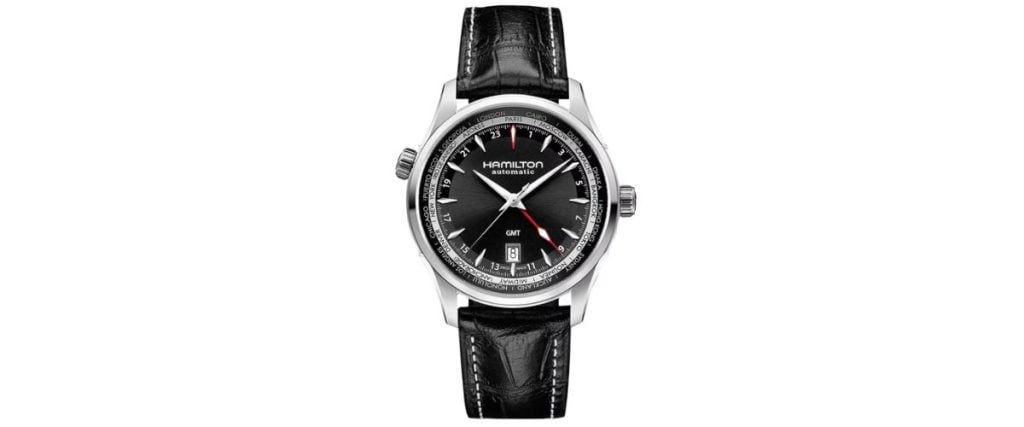
The Jazzmaster GMT Auto has both a jumping “office or caller” GMT hand as well as a city world time ring in the periphery that can be rotated with the extra crown at the 9:30 position. Unlike many sport GMTs, this piece provides similar capabilities in a more refined package consistent with the Jazzmaster family ethos.
The 42 mm stainless steel case has a thickness of only 11.5 mm, svelte by GMT standards. The dial is black with a subtle sunburst finish that exhibits differing effects and hues in variable light. The red GMT hand provides a nice contrasting pop of red.
The white 24-hour scale and black-and-white rotating city disc cram in a lot of information, but with sparse print and a discreet date window at 6, the dial still appears relatively uncluttered and legible. It is powered by the 2893-2 movement. Retail Price: $1,295
Hamilton Jazzmaster Face 2 Face II (ref. H32866781)
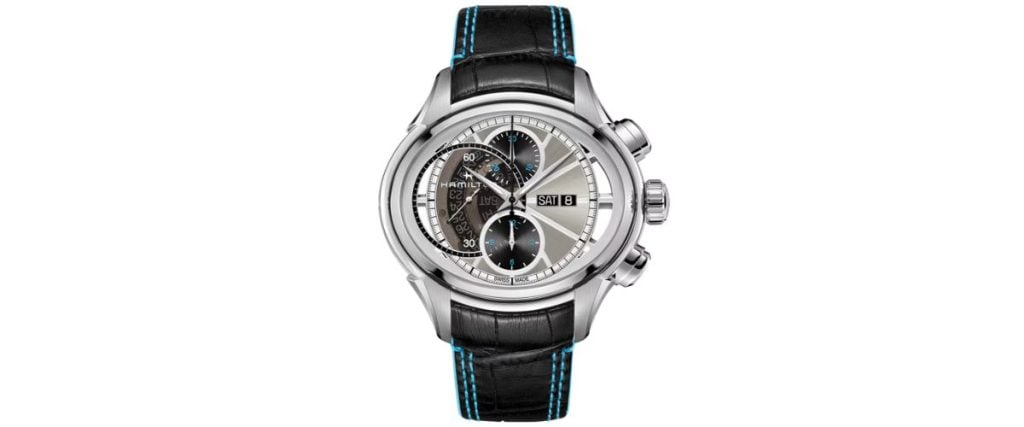
The Face 2 Face Auto Chrono is a limited edition of 1,999 pieces that has a lot going on: oval 53 mm x 44 mm stainless steel case, 17.4 mm thickness, and by my count, six complications: day, date, chronograph, tachymetry, telemetry, and pulsometry.
That means 3 overlapping subdials on the partially skeletonized main watch face, including a ginormous running seconds subdial that takes up almost half of the main dial. This has the same rotating case feature as the aforementioned Face 2 Face III, and on the other side is a sapphire display with a view of the Caliber H-41 movement as well as tachymetry, telemetry, and pulsometry with a sky blue measuring hand.
There is a 24 mm wide black leather strap with the same sky blue stitching and a folding clasp. This one will garner queries from regular folks and watch enthusiasts alike; the real question is: Will you be able to explain them when asked? Retail Price: $3,995 .
Conclusion
The Jazzmaster ensemble is a reminder from Hamilton of a hip and improvisational, “cool daddy-o” side to their corporate personality that adds complexity and interest to their more famous core collections of military and movie watches. Jazz music might not be for everyone, but chances are there is at least one Hamilton Jazzmaster that is right for you.

